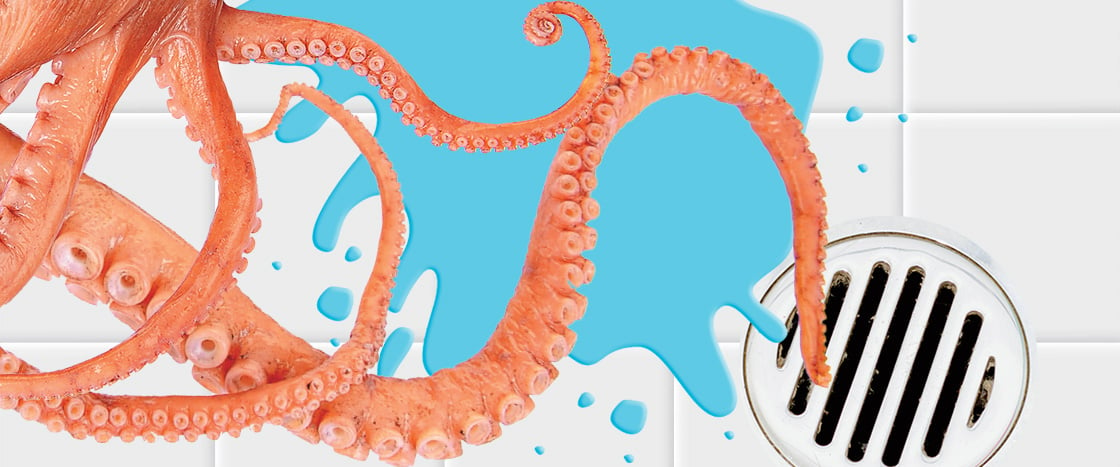Jim McMahon/Mapman ®
It was early morning at the aquarium. Workers arrived and said hello to the fish. But when they got to the octopus tank, they were shocked. Inky the octopus was gone!
Was Inky kidnapped? It didn’t look like it. Instead, it looked like Inky had escaped.
The top of Inky’s tank was slightly open. There was a wet trail on the floor. Octopus tracks! The slippery tracks led to a small drain in the floor.
Inky must have slithered down the drain and into the water pipes. Those pipes led out to the ocean. Inky had gone to the sea!
Blotchy, the smaller octopus at the aquarium, was still in the tank. He had stayed behind. It was Inky who wanted to be free.

